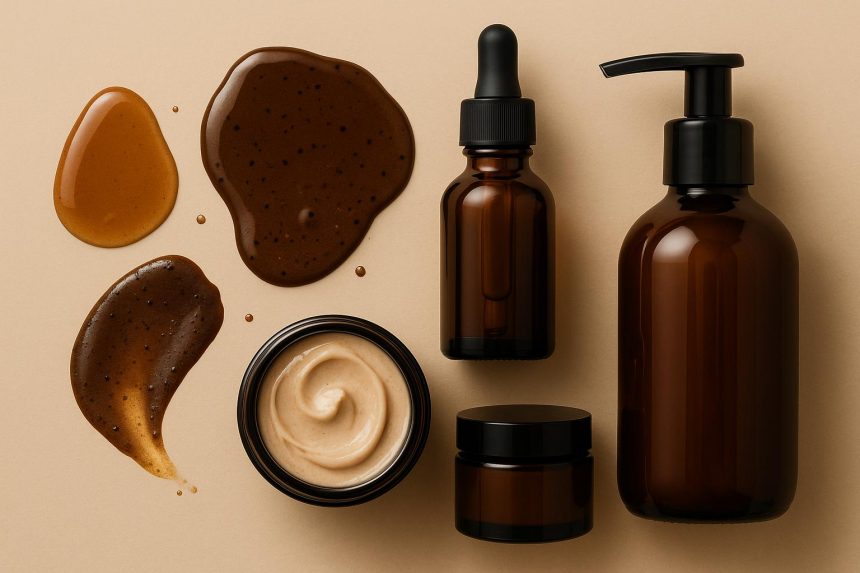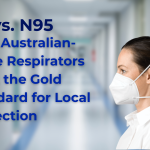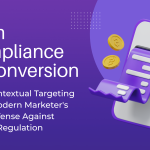Does your skincare routine actually work on those stubborn dark spots? Hyperpigmentation affects skin through excess melanin production, creating patches darker than surrounding tissue. Post-inflammatory hyperpigmentation from acne heals differently than melasma triggered by hormones, while sun spots develop through entirely separate mechanisms. Each type responds to different treatments—some fade with consistent skincare, others require medical intervention, and certain forms need combination approaches for visible improvement.
The depth of pigmentation determines treatment success more than the darkness of spots. Superficial pigmentation sitting in the epidermis often responds to topical treatments within 8-12 weeks. Dermal pigmentation embedded deeper requires professional procedures like chemical peels or laser therapy. Mixed-depth pigmentation, common in melasma, presents the greatest challenge and typically needs both skincare and clinical treatments. Consulting the best dermatologist Singapore ensures an accurate diagnosis and a personalized treatment plan that targets the root cause of pigmentation.
Types of Hyperpigmentation and Treatment Response
Post-Inflammatory Hyperpigmentation (PIH)
PIH develops after skin trauma—acne, cuts, burns, or treatments trigger melanocyte overactivity during healing. The inflammation cascade releases cytokines that stimulate melanin production beyond normal repair needs. PIH appears as flat marks ranging from pink to brown or black, depending on skin tone and inflammation severity.
Epidermal PIH may fade with targeted skincare containing vitamin C (10-20% L-ascorbic acid), niacinamide (4-5%), or alpha arbutin (2%). These ingredients interrupt tyrosinase activity, the enzyme controlling melanin synthesis. Dermal PIH, appearing grey or blue-tinted, resists topical treatments because ingredients cannot penetrate deeply enough to affect embedded pigment.
Recent PIH responds differently than established marks. Treating PIH within the first three months may yield different results than addressing year-old discoloration. Darker skin types experience more persistent PIH due to higher baseline melanocyte activity and increased inflammatory responses.
Melasma
Melasma creates symmetrical brown or grey-brown patches, typically across cheeks, forehead, upper lip, and nose bridge. Hormonal fluctuations during pregnancy, oral contraceptive use, or hormone replacement therapy trigger melasma in genetically predisposed individuals. UV exposure worsens existing melasma and can initiate new patches.
The condition involves multiple pathways beyond simple melanin overproduction. Affected skin shows increased vascularity, disrupted basement membrane, and elevated mast cell infiltration. Solar elastosis—damaged elastic fibers from chronic sun exposure—frequently accompanies melasma, complicating treatment.
Hydroquinone 2-4% is commonly used for melasma treatment, though many patients require prescription-strength formulations or combination therapies. Triple combination creams containing hydroquinone, tretinoin, and corticosteroid (Kligman's formula) may show different efficacy than single ingredients. Treatment typically requires 8-12 weeks minimum, with many patients needing maintenance therapy indefinitely.
Solar Lentigines (Age Spots)
Solar lentigines develop through cumulative UV damage over decades. Unlike freckles that fade in winter, age spots persist year-round. These well-demarcated brown spots contain increased melanocytes and melanin within elongated rete ridges—the downward projections of epidermis into dermis.
Topical treatments show limited efficacy for established solar lentigines. Retinoids may lighten spots slightly over 6-12 months, while hydroquinone produces modest improvement in some cases. Most solar lentigines require procedural intervention—Q-switched lasers target melanin specifically, while IPL addresses both pigment and associated photodamage.
Skincare Ingredients That Work
Vitamin C
L-ascorbic acid inhibits tyrosinase and reduces oxidized melanin back to lighter-colored compounds. Concentrations between 10-20% are commonly used—lower concentrations may have reduced activity while higher levels can increase irritation. Vitamin C serums require pH 3.5 or below for penetration, which some users find irritating.
Stable derivatives like sodium ascorbyl phosphate, magnesium ascorbyl phosphate, and 3-O-ethyl ascorbic acid offer gentler alternatives. These forms convert to active vitamin C within skin but show different activity levels compared to pure L-ascorbic acid. Tetrahexyldecyl ascorbate, a lipid-soluble form, penetrates deeper and causes less irritation than water-soluble versions.
Daily morning application under sunscreen may help with vitamin C benefits. The antioxidant properties provide additional photoprotection while addressing existing pigmentation. Results typically appear after 6-8 weeks of consistent use.
Retinoids
Tretinoin accelerates cell turnover, bringing pigmented cells to the surface for faster shedding. The medication also inhibits tyrosinase and transfers melanin more evenly among keratinocytes. Prescription tretinoin (0.025-0.1%) shows different activity levels than over-the-counter retinol, which requires conversion to retinoic acid within skin.
Adapalene, available without prescription in many countries, primarily targets acne but shows modest anti-pigmentation effects. Tazarotene, a potent topical retinoid, can treat pigmentation but may cause irritation in many users. Retinaldehyde offers an intermediate option—different activity than retinol but gentler than prescription retinoids.
The retinization period lasts 6-12 weeks as skin adjusts to increased cell turnover. Starting with lower concentrations every third night, gradually increasing frequency, may help minimize irritation while building tolerance.
Niacinamide
Niacinamide disrupts melanosome transfer from melanocytes to surrounding keratinocytes. Rather than reducing melanin production, it prevents pigment distribution into skin cells. Concentrations of 4-5% are commonly used—higher levels may cause flushing or irritation.
This ingredient pairs well with other actives. Niacinamide stabilizes vitamin C, reduces retinoid irritation, and can work alongside hydroquinone. The anti-inflammatory properties may benefit PIH by addressing underlying inflammation while treating discoloration.
Hydroquinone
Hydroquinone inhibits tyrosinase. Over-the-counter formulations contain 2%, while prescription versions reach 4-8%. The ingredient works through multiple mechanisms—enzymatic inhibition, melanocyte cytotoxicity, and degradation of melanosomes.
Concerns about ochronosis—paradoxical darkening with prolonged use—may affect treatment duration. Healthcare professionals often recommend cycling hydroquinone: three to four months on, followed by equal time off. Combination with tretinoin and mild corticosteroids may reduce irritation risk while affecting treatment outcomes.
When Skincare Falls Short
Deep dermal pigmentation resists topical treatments because ingredients cannot penetrate the dermal-epidermal junction effectively. Hemosiderin staining from bruising or vascular issues appears brown but contains iron deposits rather than melanin—requiring different treatment approaches.
Drug-induced hyperpigmentation from medications like minocycline, antimalarials, or chemotherapy agents often persists despite topical therapy. These pigmentation types may involve melanin, hemosiderin, or drug metabolite deposits throughout dermis layers.
Refractory melasma frequently shows mixed epidermal and dermal components visible under Wood's lamp examination. The dermal component appears unchanged with topical treatments, creating challenges when patches lighten unevenly. Hormonal triggers may override treatment effects, causing continuous melanocyte stimulation despite therapy.
Professional Treatments
Chemical Peels
Superficial peels using glycolic acid (30-70%), salicylic acid (20-30%), or lactic acid remove epidermis layers containing excess pigment. These peels require minimal downtime but need multiple sessions for visible improvement. Jessner's solution combines salicylic acid, lactic acid, and resorcinol for enhanced penetration.
Medium-depth peels with trichloroacetic acid (TCA) 25-35% reach papillary dermis, addressing deeper pigmentation. Recovery involves 7-10 days of peeling and redness. TCA combined with glycolic acid or Jessner's solution achieves controlled, predictable depths while minimizing complications.
Laser Therapy
Q-switched lasers deliver nanosecond pulses that shatter melanin particles through photoacoustic effect. The Nd:YAG (1064nm) treats deeper pigmentation and darker skin types, while Q-switched ruby (694nm) and alexandrite (755nm) target superficial pigment in lighter skin.
Picosecond lasers generate shorter pulses, creating more efficient pigment destruction with less thermal damage. These devices show promise for stubborn pigmentation resistant to traditional Q-switched treatment. Lower fluences with multiple passes reduce PIH risk compared to single high-energy treatments.
Fractional lasers create microscopic treatment zones surrounded by intact skin, promoting rapid healing. Non-ablative fractional lasers (1440nm, 1540nm, 1927nm) target pigmentation while stimulating collagen. The 1927nm wavelength targets water and melanin in epidermis, making it effective for superficial pigmentation.
Intense Pulsed Light (IPL)
IPL devices emit broad-spectrum light (500-1200nm) with filters selecting specific wavelength ranges. The 515-755nm range targets melanin while avoiding deeper penetration. Multiple chromophores absorption—melanin, hemoglobin, water—allows simultaneous treatment of pigmentation, redness, and texture.
Treatment requires multiple sessions spaced several weeks apart. Each pulse feels like a rubber band snap with mild warmth. Pigmented lesions darken immediately, forming micro-crusts that shed within 7-10 days. Melasma treatment with IPL requires careful parameters to avoid rebound hyperpigmentation.
Conclusion
Superficial hyperpigmentation responds to consistent skincare with vitamin C, retinoids, and niacinamide within 8-12 weeks. Deep dermal pigmentation and refractory melasma require professional treatment combining topical and procedural approaches. Sun protection remains essential for preventing new pigmentation and maintaining treatment results.
If you’re experiencing stubborn dark spots unresponsive to skincare, consult a dermatologist for a personalized treatment plan.
Lynn Martelli is an editor at Readability. She received her MFA in Creative Writing from Antioch University and has worked as an editor for over 10 years. Lynn has edited a wide variety of books, including fiction, non-fiction, memoirs, and more. In her free time, Lynn enjoys reading, writing, and spending time with her family and friends.















